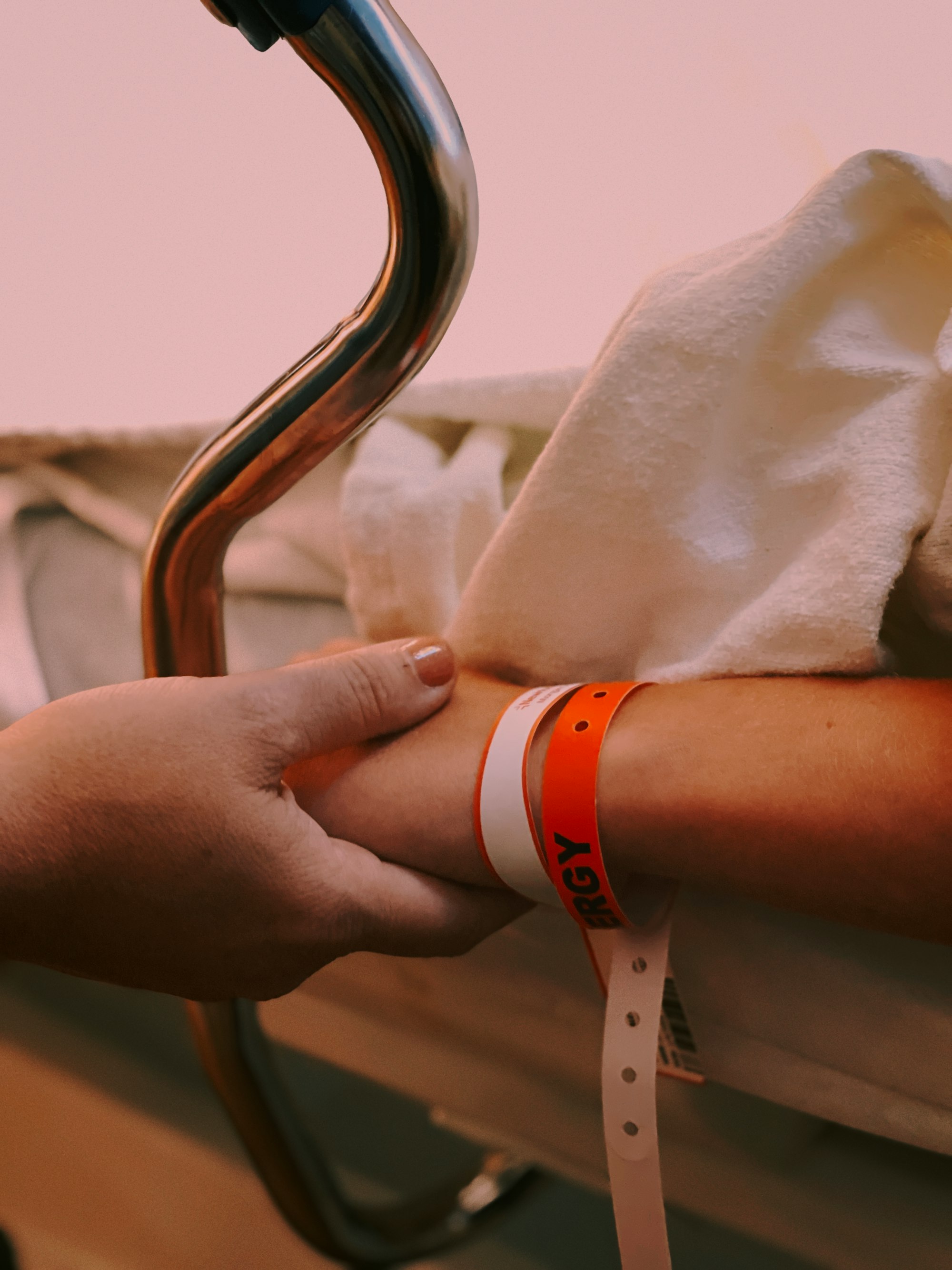Can Fever Cause Hallucinations?
Can fever cause hallucinations? High fevers, especially in older adults, can lead to confusion or hallucinations. Learn about the link between fever and altered mental states,

This blog post will explore the topic of fever and hallucinations and will aim to answer the question: Can fever cause hallucinations? Fevers are a natural part of the body’s defense system as they help to fight off infection. However, high fevers can sometimes lead to more serious health concerns. It is important to understand the link between fever and hallucinations, and what you can do to prevent them from occurring.
We’ll start by defining fever and hallucinations, looking at physical symptoms associated with high fevers, and exploring any potential risks associated with allowing a fever to go unchecked, including how hallucinations involve experiencing perceptions that do not correspond to external sensory inputs. We will also discuss prevention methods and possible treatments for reducing a fever. By the end of this article, you will have a better understanding of the relationship between fever and hallucinations and what steps you can take to reduce the likelihood of experiencing either.
Fever is a common illness that generally signals an underlying infection or illness. When present, fevers can be mild or quite severe. Generally speaking, the medical definition of a fever is a body temperature higher than 37.8 ˚C (100 ˚F). Fevers occur when the body’s immune system is trying to fight off a foreign invader, such as a virus, bacterium, fungus, protozoa or parasite. Though most fevers are not serious, it’s important to pay attention to the other signs and symptoms associated with the fever to determine if medical treatment is necessary.
Fever symptoms can include:
- Body chills
- Feeling hot to the touch
- Sweating excessively
- Headache
- Lack of appetite
- A general feeling of being unwell
Some of the most common causes of fever can include:
- Viral infections such as the common cold, influenza, or shingles
- Bacterial infections such as tonsillitis, ear infections, or strep throat
- Allergic reactions
- Immunizations
- Concussions and head injuries
- Brain tumors or cancer
- Autoimmune diseases
- Medications
If the fever is accompanied by other symptoms, such as a rash, difficulty breathing, or severe pain, medical attention must be sought as soon as possible. Furthermore, young children and older adults require immediate medical attention if they develop a fever.
Hallucinations are perceptions, usually visual and/or auditory, of something that doesn’t exist. People may experience hallucinations as a result of certain medical conditions, taking drugs, or even due to extreme levels of stress or fatigue. Generally, they occur more frequently in people with a psychiatric condition, such as schizophrenia or bipolar disorder.
Hallucinations can involve any one of the senses: sight, sound, smell, taste, touch, or even a sixth sense. In terms of sight, people might see things that aren’t actually there, such as animals, shadows, or faces. They might also hear voices, or music, or even feel things that aren’t real.
The causes of hallucinations vary depending on the type and severity. Common causes include drug use, mental illness, sleep deprivation, fever, and extreme stress or trauma. Some medications, such as anticholinergic and antipsychotic drugs, can also cause hallucinations. In some cases, a person may experience “flashbacks” of traumatic events, in which images, sounds, or sensations from the past come to life in the present.
Though hallucinations can be frightening, they don’t always indicate an underlying mental illness. In many cases, hallucinations can be caused by changes in the environment, such as loud noises or bright lights. It is important to talk to a doctor if you are experiencing hallucinations, especially if they become frequent or intense. The doctor can help to determine the underlying cause and recommend treatment options.

High fevers may cause hallucinations
High fevers can cause a variety of physical symptoms that can range from mild to severe. These physical symptoms can be divided into two general categories; common and less commonly known. Common physical symptoms associated with high fevers include a flushed face, body chills or shaking, increased sweating, rapid heart rate, headache, and fatigue.
Fever is often accompanied by a feeling of being extremely cold, despite the body temperature being elevated. The cold feeling is caused by the body’s natural reaction to fever where it increases blood flow to the skin in an effort to cool itself off, making the person feel cold and clammy. This process can also result in body chills or shaking. Sweating is another common reaction to fever as the body tries to reduce the temperature further by stimulating sweat production.
Rapid heart rate is also a common symptom of high fever. It occurs as the heart works harder to pump around the extra volume of blood that the body needs to raise its core temperature. A headache may accompany a fever due to dehydration that often results from fever and excess sweating. Lastly, fatigue is also a symptom of high fever as the body expends more energy in an attempt to battle the fever.
In some cases, physical symptoms associated with fever can be more severe, such as shortness of breath and chest pain. In these instances medical advice should be sought immediately. Taking simple steps such as drinking plenty of fluids and keeping the home environment cool can sometimes help bring down a fever and even prevent it from occurring in the first place.
High fevers can cause a variety of other symptoms, some of which are not as commonly known as the usual ones. Many people do not realize that high fevers can cause aches and pains throughout the body, similar to those of the flu. It can also result in chills and sweating.
Other symptoms include extreme fatigue and exhaustion, lack of appetite, dizziness or light-headedness, confusion, irritability, and headaches. High fevers can also cause dry mouth, burning sensation in the throat, and difficulty speaking or understanding conversations.
In extreme cases, high fever can lead to seizures. This can be particularly dangerous if not identified and treated quickly. Commonly in children, high fevers may cause hallucinations. That is why it is important to monitor your child’s temperature when they are ill and seek medical attention if the fever persists.
Most of these symptoms, such as aches, pains, dizziness and confusion, will only occur when the fever is higher than 102°F (38.9°C). If you suspect your child is experiencing any of these symptoms, it is important to seek medical help right away.
It is also important to be aware of the other potential causes of these symptoms. For example, dehydration can also cause dizziness and confusion. Therefore, it is important to ensure that your child is maintaining an adequate fluid intake while they are ill.
Knowing the warning signs of a high fever is important for taking proper action. Although the symptoms may be uncomfortable, they should subside once the underlying cause of the fever is addressed. If you are concerned about any of the symptoms, it is important to consult with a healthcare professional.
High fevers and hallucinations have long been linked, and the exact relationship between the two can be complicated to understand. In order to explore this link, it is important to first understand what a fever is and what causes it, as well as to understand what hallucinations are and their potential causes.
A fever occurs when the body’s temperature is raised above its normal level, usually signalling the presence of an infection in the body. It can range in severity from mild to very high, with a high fever typically considered to be over 38°C (100°F). Common symptoms include chills, sweating, headache, nausea, dizziness, and general discomfort.

Fever hallucinations can include hearing, seeing or feeling things that are not there.
Hallucinations are defined as sensory perceptions that exist outside the realm of normal perception. They can vary in intensity and at times can be confused with reality. Possible causes for hallucinations include: physical illnesses such as fever, mental illnesses such as schizophrenia, drug use, and sleep deprivation.
Empirical studies suggest that there may be a direct connection between high fevers and hallucinations. The exact physiological reasons behind this link remain unclear, but some experts believe it could possibly be related to the toxic levels of histamine released by the immune system during an infection. This excessive production of histamine can cause changes in brain chemistry that lead to delusions, hallucinations and other states of consciousness.
Studies have also suggested that certain medications used to treat fever may lower the risk of experiencing hallucinations due to their ability to reduce both fever and inflammation. In addition, keeping hydrated and taking frequent breaks to cool down can help prevent high fever levels and reduce the risk of hallucinations.
While the relationship between high fevers and hallucinations remains complex and not fully understood, it is important for individuals to be aware of the potential risks of allowing these symptoms to go unchecked. If you or a loved one show signs of both a high fever and hallucinations, seek medical attention as soon as possible.
Fever is, in most cases, a body’s natural response to fighting off a virus or infection. However, when the temperature of the body rises significantly, it can cause a number of symptoms and potentially lead to serious complications. One such complication can be hallucinations brought on by high fever.
It is possible for individuals to reduce the likelihood of having hallucinations during a high fever by following some simple guidelines. Firstly, it is important to keep track of your temperature and seek medical help if the temperature starts to rise above 38°C (100.4°F). Secondly, you should drink plenty of fluids regularly throughout the day and avoid too much physical activity as this can make the fever worse. Finally, take appropriate medication to reduce the fever. Commonly prescribed medications include paracetamol, ibuprofen, and aspirin. Your doctor may prescribe another type of medication depending on the severity of the fever.
If you are able to take steps to prevent your fever from reaching dangerously high levels, then the risk of experiencing hallucinations is greatly reduced. Awareness of the signs and symptoms of high fever can help you to seek medical help early, before the potential for hallucinations become more likely.
Understanding Hallucinations
Definition and Explanation
Hallucinations are sensory experiences that occur when a person perceives something that doesn’t actually exist in their environment. These experiences can involve any of the senses, including sight, sound, taste, smell, and touch. Hallucinations can be a symptom of various mental health conditions, such as schizophrenia spectrum disorders, or they can be caused by other factors like substance use, neurological conditions, or certain medical conditions. For instance, someone might see vivid images, hear voices, or feel sensations that aren’t real, which can be quite distressing.
Types of Hallucinations
There are several types of hallucinations, each involving different senses:
- Visual hallucinations: These involve seeing things that aren’t there, such as shapes, colors, or even people and animals.
- Auditory hallucinations: Hearing voices or sounds that aren’t real is a common type of hallucination. This can include hearing voices that talk to the person or about them.
- Tactile hallucinations: These involve feeling sensations on the skin that aren’t actually there, such as bugs crawling or being touched.
- Olfactory hallucinations: Smelling odors that don’t exist, such as smoke or rotten food, falls under this category.
- Gustatory hallucinations: Tasting things that aren’t actually in the mouth, which can be particularly unsettling.
Difference Between Hallucination and Delusion
While hallucinations are sensory experiences that involve perceiving something that isn’t there, delusions are false beliefs that a person holds despite evidence to the contrary. For example, a person with schizophrenia may experience auditory hallucinations, such as hearing voices that aren’t real, and also hold the delusion that they are being persecuted by an external force. Understanding this distinction is crucial for proper diagnosis and treatment, as the management strategies for hallucinations and delusions can differ significantly.
Risks Associated with High Body Temperature
High fevers, caused by a variety of illnesses, can be extremely dangerous and should not be taken lightly. High fevers can also lead to mental confusion, which can be particularly dangerous if not addressed promptly. When left unchecked, high fevers can lead to serious medical complications, such as hallucinations, extreme fatigue, dehydration, and seizures. They can even be life-threatening in extreme cases.
The risk associated with high fevers depends on the individual’s age and overall health. Generally, younger children, the elderly, and those with underlying chronic health conditions are more vulnerable to the risks of high fevers. If your fever has lasted for more than three days or if it rises above 103°F, it is important that you seek medical advice from a healthcare provider as soon as possible.
In addition to the physical risks, high fevers can take an emotional toll. Children and adults alike can experience fear, confusion, and distress when dealing with a high fever. It is important to provide a supportive and comforting environment for those suffering from a fever to help them cope with the feelings of uncertainty and fear.
It is also important to remember that high fevers can cause hallucinations, which can be extremely disconcerting for an individual. Hallucinations can cause paranoia, anxiety, confusion, and fear, and can even result in self-harm or accidents. It is essential to seek medical advice if you or someone you know experiences hallucinations with a high fever.
Finally, it is important to note that prolonged high fevers can lead to long-term health problems, such as chronic fatigue, organ damage, and weakened immune system. If your fever continues to linger for weeks or months, it is important to consult a doctor immediately and take the necessary steps to address the issue.
Overall, it is essential to be aware of the risks associated with high fevers and to seek medical attention if necessary. Paying attention to the symptoms and potential complications of a fever can help keep you and those around you safe.

THere are many things you can do to lower a fever
The Relationship Between Body Temperature and Fever Hallucinations
How High Body Temperature Affects the Brain
When the body temperature rises due to illness or infection, it can affect the brain’s functioning and lead to hallucinations. Fever hallucinations are a common experience for people with high fevers, especially in vulnerable individuals such as the young, old, or those with weakened immune systems. The high body temperature can disrupt the brain’s normal processes, leading to vivid and often disturbing hallucinations.
Fever hallucinations can involve seeing, hearing, feeling, tasting, or smelling things that aren’t real. They can be accompanied by other symptoms such as disorientation, strange dreams, seizures, and chills. In some cases, fever hallucinations can be a sign of a more serious health issue, such as meningitis or encephalitis, and require immediate medical attention.
It’s essential to seek medical attention if fever hallucinations are frequent, disturbing, or accompanied by a high fever. Treatment for fever hallucinations typically involves addressing the underlying illness causing the fever and managing the symptoms with fever-reducing medication, rest, and hydration.
In some cases, fever hallucinations can be a symptom of an underlying mental health condition, such as schizophrenia or Lewy body dementia. In these cases, treatment may involve a combination of medication and therapy to manage the symptoms and improve the person’s quality of life.
Overall, understanding the relationship between body temperature and fever hallucinations is crucial for providing effective treatment and support for individuals experiencing these symptoms.
Treating High Fevers with Fever Reducing Medication
High fevers can be a serious health threat and should be treated properly to avoid any further complications. Luckily, there are several ways to reduce or bring down high fevers. The main methods of treatment include medication, cold compresses, lukewarm baths, and rest.
Medication is the most common method used to reduce a fever. There are two kinds of fever-reducing medications: over-the-counter (OTC) medications and prescription medications. Examples of OTC fever-reducing medications include ibuprofen (Advil, Motrin IB) and acetaminophen (Tylenol). It is important to consult with your healthcare provider before taking any OTC medications, as they can have serious side effects. Prescription medications usually contain stronger active ingredients than OTC medications and are typically prescribed by a doctor for more severe fevers.
Cold compresses are another effective way to reduce a fever. Applying a cloth that has been soaked in cold water to the forehead can help to reduce a high temperature. You can also use ice packs, but make sure to wrap them in a cloth before applying them to your skin, as direct contact with ice may lead to skin irritation.
Lukewarm baths can also be used to reduce a fever. This method works by causing the body to lose heat through evaporation. Be sure to keep the water at a comfortable temperature, as too hot or too cold water can be uncomfortable. Soaking in a lukewarm bath for a limited amount of time, no more than 15 minutes, can cool down a fever enough to reduce symptoms.
Finally, getting plenty of rest is essential to fighting off a fever. Resting allows your body to focus on healing itself and is one of the best ways to recover from a fever. Make sure to get plenty of fluids, such as water and electrolyte drinks, while resting.
All of these methods of treatment can help to reduce a fever, but if the fever persists for an extended period of time it is important to seek medical care. Your doctor may prescribe additional treatments depending on the cause and severity of the fever.
In conclusion, the link between high fevers and the potential to experience hallucinations is a real phenomenon. Proper treatment of high fevers can help reduce symptoms such as hearing voices hallucinations, which can be particularly distressing for the patient. While there are plenty of treatments available to reduce the severity of fever, it is important to be vigilant about preventing and treating fevers to reduce the risk of hallucinations. If an individual is experiencing a fever accompanied by hallucinations, it is best to talk to a medical professional for proper diagnosis and treatment.
FAQ: Can Fever Cause Fever Hallucinations?
Can seniors experience hallucinations when they are sick?Yes, seniors can experience hallucinations when they are sick, especially if they have a high fever. The rise in body temperature can sometimes cause the brain to function abnormally, leading to hallucinations.
What are fever hallucinations?Fever hallucinations are sensory experiences that occur when a person has a high fever. These hallucinations can include seeing, hearing, or feeling things that aren’t really there and are more common in the elderly.
Why do hallucinations occur when someone is sick?Hallucinations can occur when someone is sick due to the body’s response to infection. When body temperature rises, it can affect the brain’s normal functioning, leading to abnormal sensory experiences.
Are hallucinations with fever common in healthy seniors?While not extremely common, hallucinations with fever can occur in otherwise healthy seniors when their body temperature rises significantly due to an infection or illness.
Q5: What should I do if my aging family member experiences hallucinations from fever?If your aging family member experiences hallucinations from fever, it is important to keep them calm and comfortable. You should monitor their fever and consider giving them fever reducing medication as directed by a healthcare provider. It’s also advisable to seek medical attention to ensure there are no serious underlying issues.
How can fever reducing medication help with hallucinations?Fever reducing medication can help lower the body temperature, which in turn can reduce or eliminate hallucinations caused by fever. By managing the fever, you help normalize brain function and alleviate the hallucinations.
Are fever hallucinations a sign of a serious condition?Fever hallucinations are not necessarily a sign of a serious condition but can be alarming. They often occur due to high fever and can be managed with proper fever reducing measures. However, persistent or severe hallucinations should be evaluated by a healthcare professional.
How high does the fever need to be to cause hallucinations in seniors?Hallucinations can occur at various fever levels, but they are more likely when the body temperature rises above 102°F (38.9°C). Each person is different, so some may experience hallucinations at lower temperatures.
Can hallucinations when sick happen without a fever? While less common, hallucinations can occur when sick without a fever, often due to dehydration, severe infection, or other underlying health conditions. It’s important to get medical advice if hallucinations occur without a high fever.
How can I prevent hallucinations when my aging family member has a fever? To prevent hallucinations when your aging family member has a fever, monitor their temperature regularly and use fever reducing medications as recommended. Keep them hydrated and comfortable, and seek medical advice if the fever persists or the hallucinations are severe.
Can hallucinations occur when falling asleep? Yes, hallucinations can occur during the transitional states of sleep, known as hypnagogic hallucinations, which can manifest as auditory or visual experiences. These are particularly prevalent in individuals with specific conditions like narcolepsy, but they can also occur in the general population without any associated disorders.
You might also like this article:











